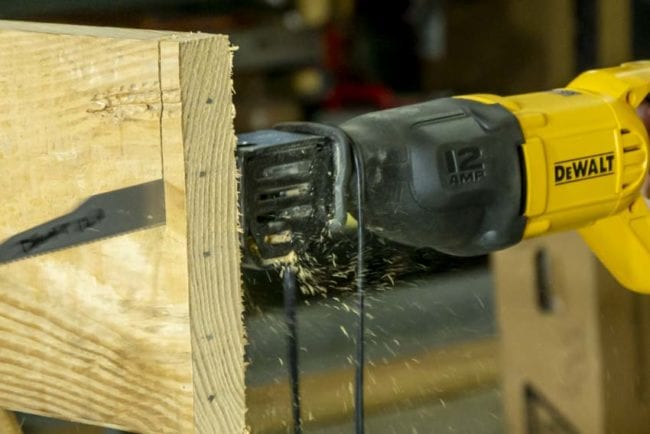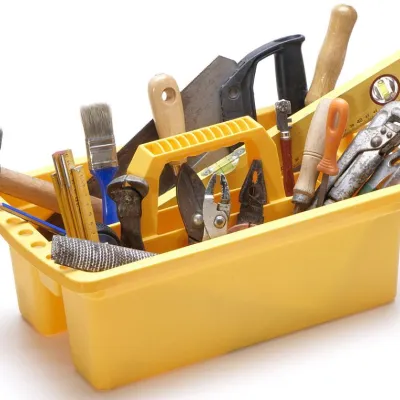Although power tools can’t replace hand tools, they sure make construction work more accessible and more efficient. It can be a real timesaver to not have to drag a cord behind you and yet have a tool with enough power to do a professional job.
Nowadays, there are numerous cordless tools powered by lithium-ion batteries that would be an asset when constructing a house. These include screwdrivers, reciprocating saws, and even circular saws. For years such tools were designed primarily for homeowner use, but today they are used on almost every job site. I wouldn’t want to be without them.
Circular saws
The circular saw has been around since the 1920s, but it didn’t really catch on until the housing boom began after World War II.
These days, many homeowners have one in the garage. For a builder, this portable power tool is indispensable. The most popular circular saws are designed to hold 71⁄4-in.-diameter blades. In the eastern part of the United States, most carpenters prefer direct-drive saws, often referred to as sidewinders (see the top photo on the facing page). In the West, carpenters mainly use heavier worm-drive models. Check out both to see which one you prefer. Above all, buy quality. Light, low-priced homeowner models aren’t in the same league with professional
models.
Here are some tips for using your saw safely and accurately. Some of them apply to other power tools as well. As with any power tool, be sure to study and follow the instructions in the manual.
Make sure the blade guard works freely before using the tool.
- Use the right blade for the job, and replace a dull blade with a new one. Carbide-tipped blades are best for most wood-cutting work.
- To reduce friction when cutting, apply paste wax to both sides of the blade or spray it with silicone.
- Adjust the saw’s cutting depth according to the thickness of the material. If you are cutting 1⁄2-in.-thick material, set the cutting depth at no more than 3⁄4 in. The less amount of blade that’s exposed, the less potential for injury should something go wrong.
- Always unplug your saw when changing blades and adjusting the cutting depth or angle.
- To begin a cut, place the saw base on the stock with the blade about 1 in from the wood edge, aligned with the cut line. Hold the saw with both hands, pull the switch, and slowly push the blade into the wood, following the cut line. Go slow, guiding the saw, and let it do the work. Eventually, you will learn to cut with one hand on the saw and the other hand on the material.
- Make sure the stock is adequately supported. With proper support, the cut won’t bind on the blade, and the cut-off end will learn to cut with one hand on the saw and the other hand on the material.
- Don’t try to hold a short or small piece with one hand while guiding the saw with the other. Instead, use a clamp to secure the workpiece while you make the cut.
Reciprocating saws

Another frequently used tool is the reciprocating saw, also called a saber saw or a Sawzall®—the name given to Milwaukee’s® popular saw. This tool allows you to cut in tight places and make curved cuts. Different blades are available for cutting through wood, metal, plaster, and plastic. For general use, I buy 6-in. bi-metal blades, which cut through both wood and metal.
Chop saws
The power-miter saw (generally referred to as a chop saw) has revolutionized finish carpentry just as the circular saw revolutionized rough framing carpentry. You can make precise square and angled cuts in framing lumber, door and window casings, and baseboard trim with a chop saw. These saws are rugged and easy to use. When equipped with a fine blade, they can make glass-smooth cuts.

Sliding compound miter saw.
This tool, the sliding compound miter saw, is a trim worker’s dream. It is a chop saw that can cut angles across wide boards. I use it to cut baseboards and door casings and cut across wide boards used in closets, blocks, headers and cripples used in a house frame.

Lightweight table saw
It wasn’t long ago that table saws were cumbersome, heavy, and anything but portable. But times have changed. Now an on-site table saw can be moved easily by just one or two workers. But don’t be fooled by the lightweight label. These saws are well built, accurate, and with reasonable care, will last for years.
If you don't know, read What tools do you need to build a house?

